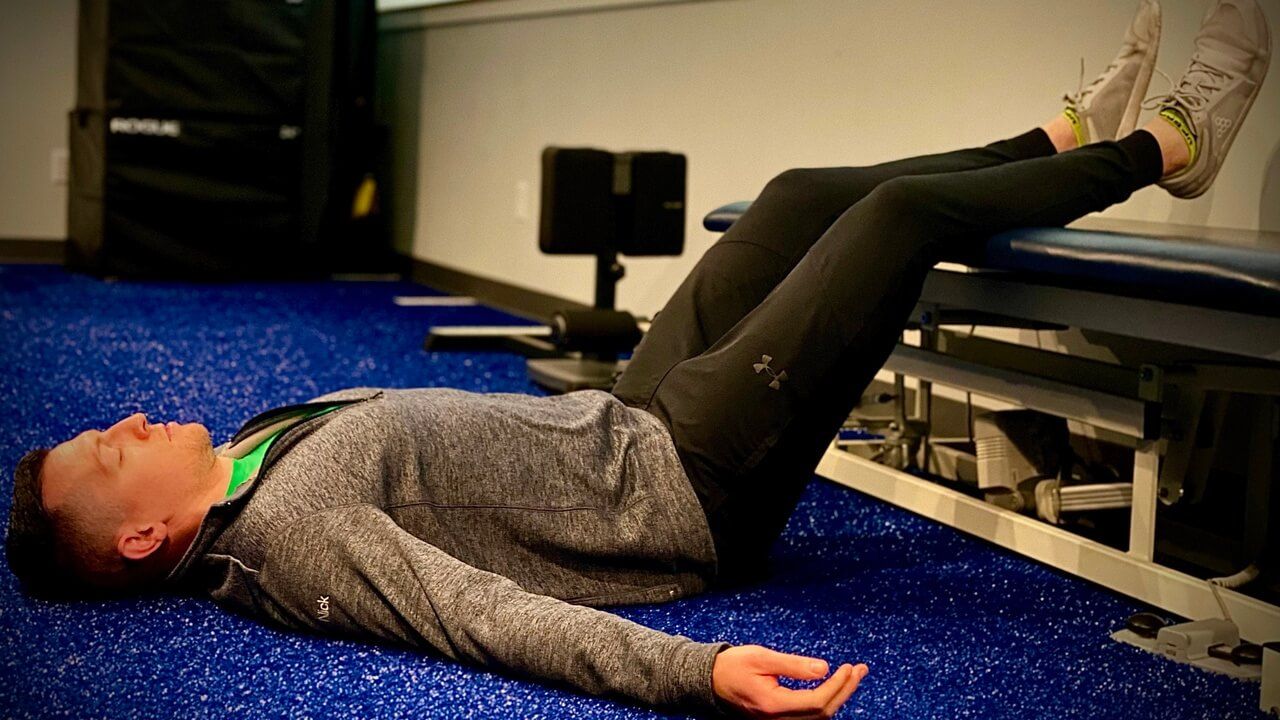Breath of Life
May 07, 2021
By: Nick Sienkiewicz, DPT, CSCS
Training The Automatic To Enhance Your Health
Breathing is a necessary function of life that we do continuously. In fact, we breathe 20,000 times per day. And of these 20,000 instances, many people are not even consciously aware of one of them. Breathing is so necessary for our survival that it quickly becomes automatic, and for good reason.
Would you really want to be focusing on something 20,000 times per day that isn’t your Instagram account?!?
Joking aside, it’s really important for our respiration to become subconscious, so we can be productive humans in other ways. Our bodies will find the easiest and most efficient way to carry out this process automatically, even if the path of least resistance is NOT the most effective! Just as your body will often develop compensations with its movement, it is not uncommon to create compensations with its breathing as well.
When these respiratory compensations present themselves, many people are unaware due to this automatic nature of breathing. As awareness is usually the first step toward improving anything, making yourself cognizant of how you are breathing each day can have profound impacts on your respiratory health!
So…What are the main things I should pay attention to when checking into my breath?
- Am I breathing through my nose, mouth, or both? At rest, we should ideally be nasally breathing, with your lips closed, teeth slightly apart, and tongue resting on the roof of your mouth. If this does not sound like you, try doing it right now and see how it feels. If it’s difficult, you’re in luck because you have approximately 20,000 opportunities each day!!
- Am I breathing deep, shallow, or I have no idea? Research shows humans breathe more shallowly when using technology, so essentially every waking minute for many!! A little focus and effort can change this shortening of respiration. Emphasize longer exhales and feel the euphoria!
- What is my ribcage doing with each breath? Your ribcage should expand circumferentially with each inhale and depress in 360 degrees with each exhale. If your ribs don’t seem to be moving, place your hands on the sides of your ribs, and try to press your ribs outward when you inhale. Then you can even assist your ribs back in with your hands on the exhale.
There are other things to look for, but these three are great starting points for everyone. And let’s be honest, if I were to give you any more than that, you probably wouldn’t do it!
Once you check into your breathing and see where you stand, it’s time to start working on getting better. Yes, even though the process is automatic, you can train your body to improve just as you strengthen your muscles through weightlifting.
Here are a few practical options for implementing a breathing practice into daily life:
- Morning Breath Work Meditation: Spend 5 or more minutes with one goal. Focus on each breath and nothing else. If your mind wanders, run with it! You already devoted more time toward your breathing than yesterday.
- 7-11 Breathing: Inhale for 7 seconds, exhale for 11 seconds. This is my favorite post-workout. It stimulates recovery and kickstarts the muscle building process. All aboard the gain train!!
- Box Breathing: Inhale for 4 seconds, pause for 4 seconds, exhale for 4 seconds, then another pause for 4 seconds.
- Buteyko Breathing: Calmly and fully inhale/exhale through your nose. After a full exhale, hold your nose to close the nostrils, and hold your breath as long as you can. Once your absolutely cannot hold it anymore, release your nostrils, take air back in through your nose without gasping. Repeat for 4-6 rounds. Ideally, you should be able to hold your breath for at least 30 seconds.
- Wim Hof Breathing: This is my favorite overall. It is more intense than the other techniques, but can provide wonderful effects. To perform, you will essentially hyperventilate in a controlled manner (I know kind of a deceitful statement) for 30 breaths followed by a breath hold similar to that of Buteyko breathing. During the 30 breaths, take as much air in as possible through nose and mouth simultaneously, filling your belly, ribs and head with air, then let it go. On the 30th rep, let all of your air out, pause and hold as long as possible. Once you can’t hold it any longer, perform a recovery breath by taking air in calmly through your nose, and pausing with your lungs full of air for 15 seconds. Then repeat 4-6 rounds.
There’s 5 options, so now you have no excuse.
Let’s go train the automatic! Devote a couple minutes to focusing on a few breaths of your 20,000 every day!
Stay Connected With News and Updates!
Join our mailing list to receive the latest news and updates from our team.
Don't worry, your information will not be shared.
We hate SPAM. We will never sell your information, for any reason.
